#euphorbiaceae
Text

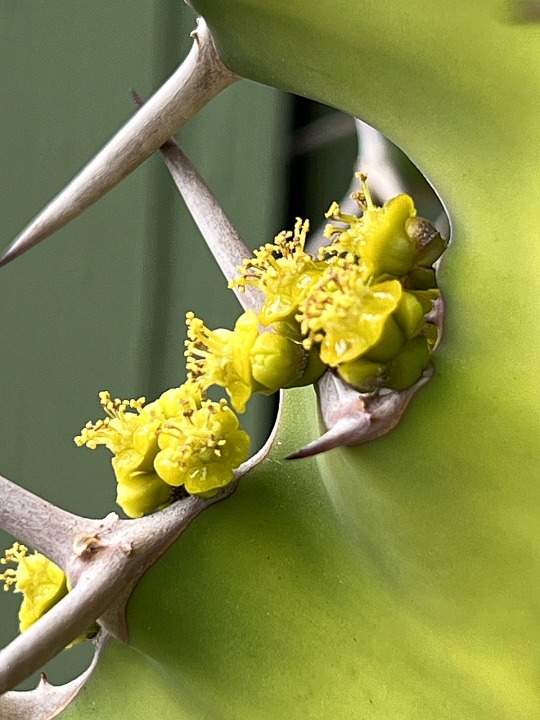
Euphorbia grandicornis
Euphorbia is a huge and extremely variable genus, but Africa has many spiny species that remind people of cactus plants, although they are not related. This one is Euphorbia grandicornis (meaning "big horn", in reference to its formidable spines), a shrubby species from the northeastern part of South Africa, as well as neighboring Mozambique and Eswatini. The dramatic "wings", formed by the widening and narrowing of its stems, are reminiscent of Euphorbia cooperi, but the latter becomes a large tree. Like most Euphorbia species, these two are quite poisonous, so care must be taken not to let the sap come into contact with one's eyes or other sensitive areas. The tiny yellow cyathia (the little cups containing the flowers) seem very small for such an impressive plant.
-Brian
124 notes
·
View notes
Text


The flowers of medusoid euphorbias (all pictured plants are hybrids) are very small, but very cute.

50 notes
·
View notes
Text

Present
96 notes
·
View notes
Text
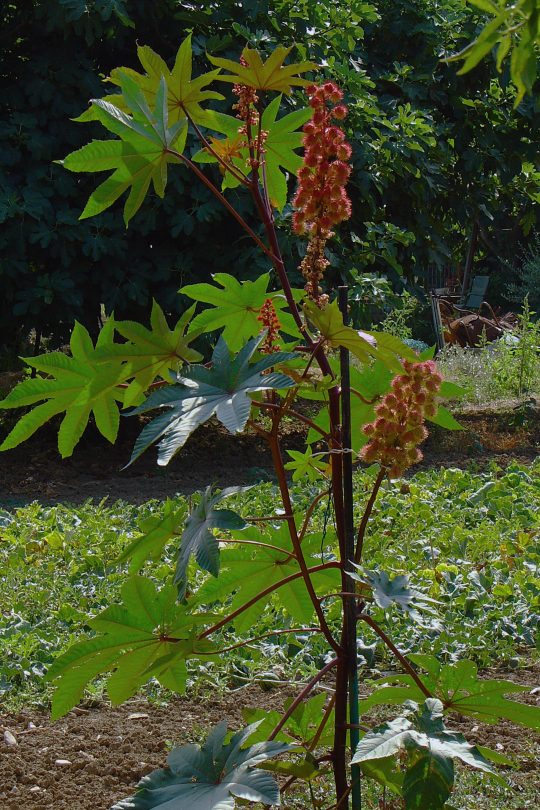
R – Ricinus communis L. – Ricino (Euphorbiaceae)
14 notes
·
View notes
Photo


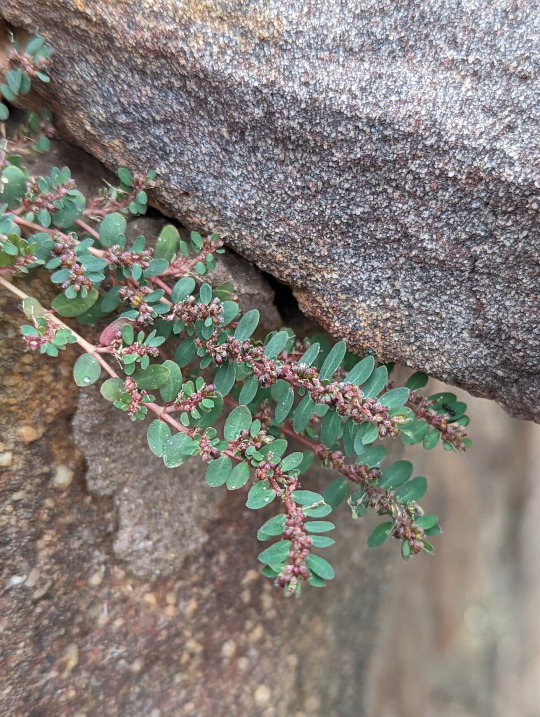
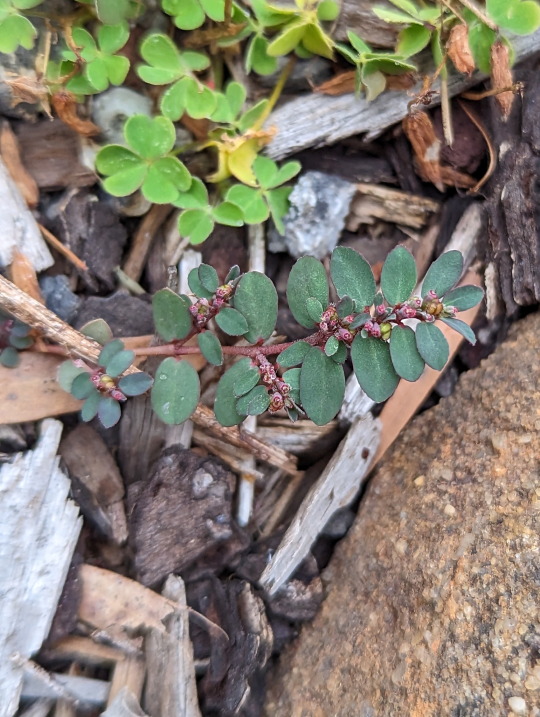
Two different Euphorbias
Top images - Euphorbia maculata
Bottom images - Euphorbia prostrata
20/03/23
#Eyebane#Euphorbia maculata#Euphorbia#Euphorbiaceae#Spurge Family#Malpighiales#Magnoliopsida#Dicots#Angiospermae#Flowering Plants#angiosperms#Tracheophyta#Vascular Plants#Plantae#Plants#botany#botanology#Prostrate Sandmat
14 notes
·
View notes
Text



A Euphorbiaceae shrub on the western slope of the Andes, Jatropha sp. 大戟科麻风树属
6 notes
·
View notes
Text
Today's Haiku with Picture 558

Not knowing the name
The Euphorbiaceae family
There is no doubt
名は知らぬ
トウダイグサ科に
違いなし
(2023.04.16)
2 notes
·
View notes
Text
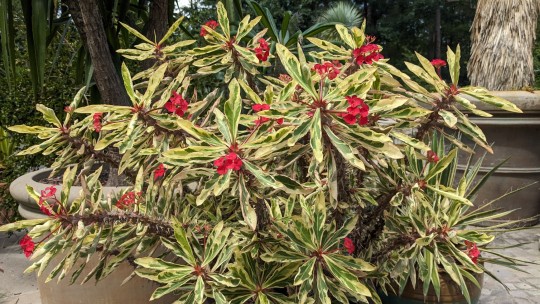
Euphorbia milii / Crown of Thorns at the Sarah P. Duke Gardens at Duke University in Durham, NC
#Euphorbia milii#Euphorbia#euphorbiaceae#Crown of thorns#Christ plant#Christ's Thorns#Flowers#Nature photography#photographers on tumblr#Sarah P. Duke Gardens#Duke Gardens#Duke University#Durham#Durham NC#North Carolina
5 notes
·
View notes
Text
#1958 - Euphorbia glauca - Shore Spurge


It was growing right next to the Mirror Bush. I’m glad @purrdence spotted it because if she’d left it a few more years it might be very difficult to find. New Zealand’s only native Euphorbia, which is surprising since the genus has a worldwide distribution and a huge number of species - over 2000.
AKA sea spurge, waiu-atua, waiū-o-Kahukura, and sand milkweed. Named for thin powdery bloom on the leaves, and Euphorbus, a Greek physician who served King Juba of Numidia in 12BC. Juba suppsedly named a cactus to honour of Euphorbus (rather unlikely to be a cactus in that part of the world - most likely one of the spiny, cactus-like Spurges) and later Linnaeus named the entire genus after the physician.
A perennial herb with multiple erect stems up to 1m tall, and underground rhizomes. Each flower, produced from October to February, is surrounded by a deep red cup-like structure with purple glands. Fruit, as here, occur from December to May. As with other Euphorbia, the sap a corrosive milky juice.
Endemic to New Zealand and the Chatham Island, growing on coastal cliffs, banks and talus slopes, sand dunes and rocky lakeshore scarps.
Cattle, sheep, pigs and possums are threats throughout the species range, mainly through browsing and trampling. Competition from taller weedy plants is significant. Coastal development such as road widening, and erosion, are further threats to most populations. Some populations on the West Coast of the South Island appear to have succumbed to a fungal disease.
2 notes
·
View notes
Text
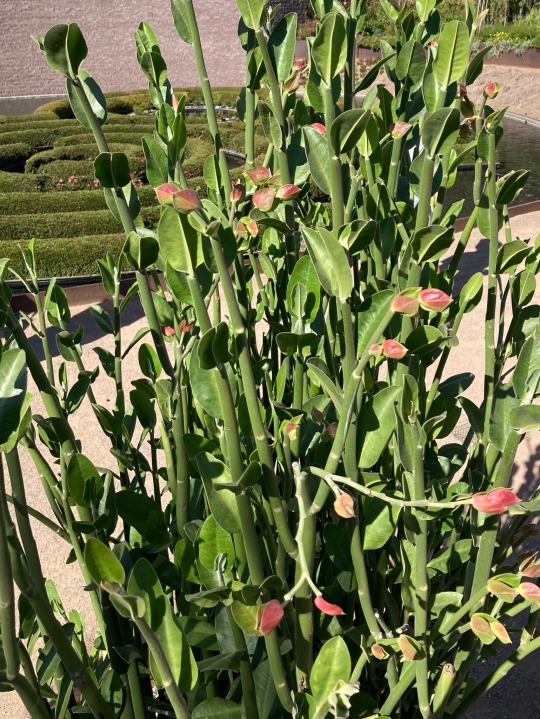

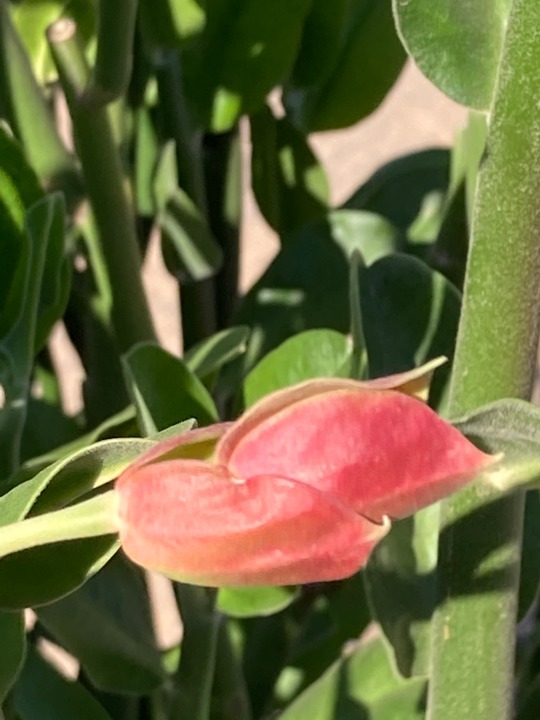
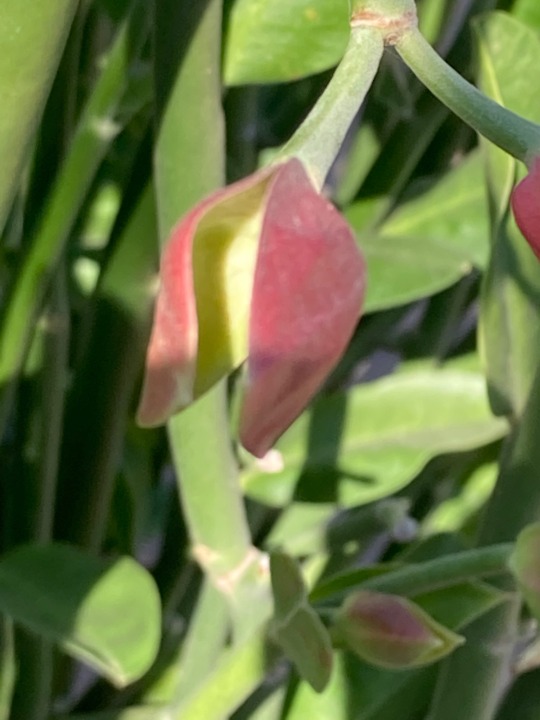


#slipper plant#euphorbia bracteata#flowering succulents#bracts#euphorbiaceae#garden#getty center#los angeles
2 notes
·
View notes
Text
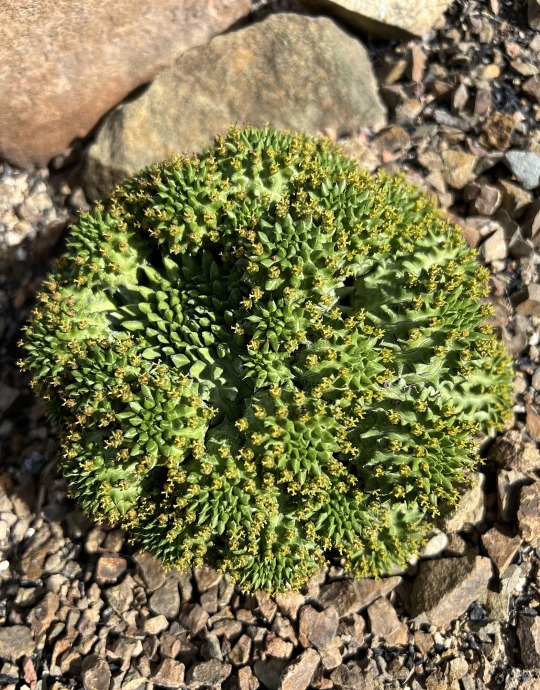
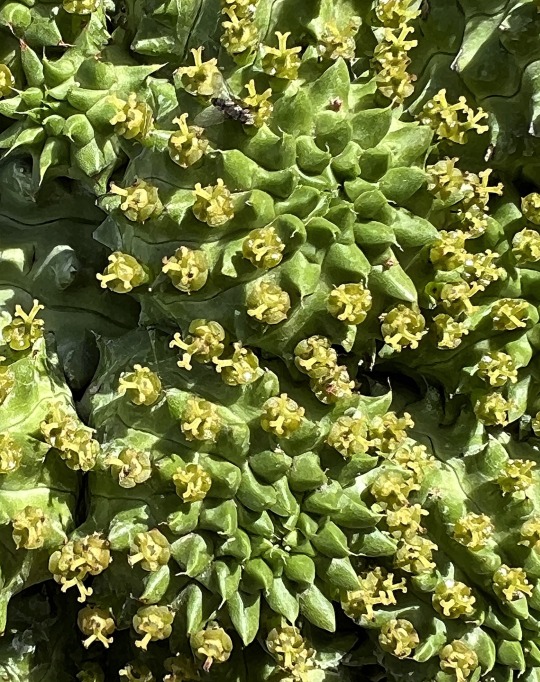
Euphorbia susannae
The genus Euphorbia is a huge one, containing everything from common garden weeds to cactus-like stem succulents. If it weren't for their unique flowers, nobody would suspect they were all related. Their flowers are tiny and lack petals, and they pop up out of the middle of a cup-like structure called a cyathium. Around the edge of the cyathium are five glands (olive green in color in the plant pictured). While some species of Euphorbia have both male and female flowers together in one cyathium, others have separate male and female plants, as is the case with Euphorbia susannae. The plant shown is a female, with its little fork-tipped styles protruding from the center of each cyathium. Native to South Africa's Little Karoo region, famed for its many succulents.
-Brian
25 notes
·
View notes
Text
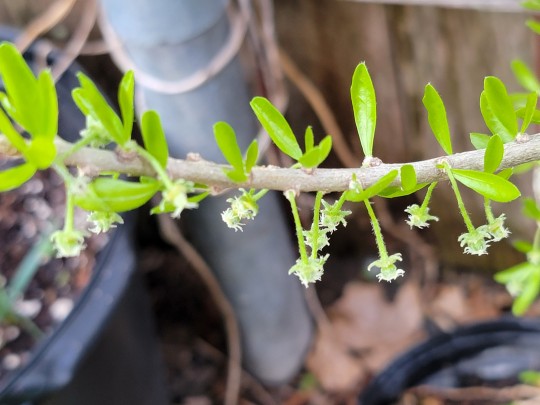

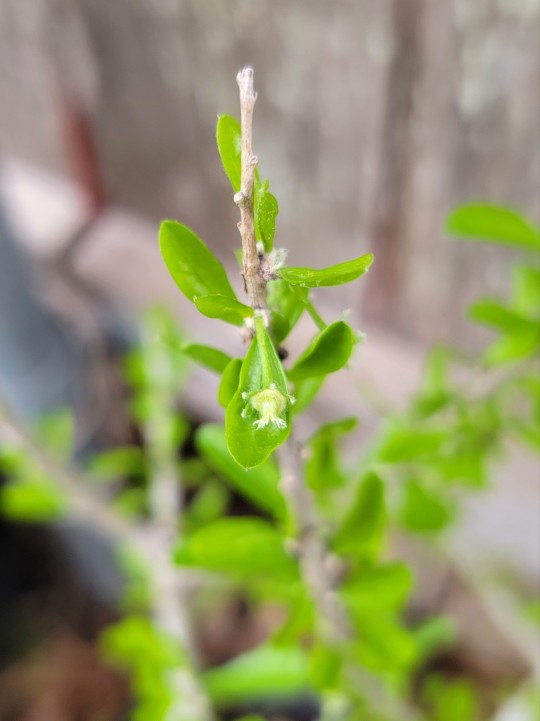
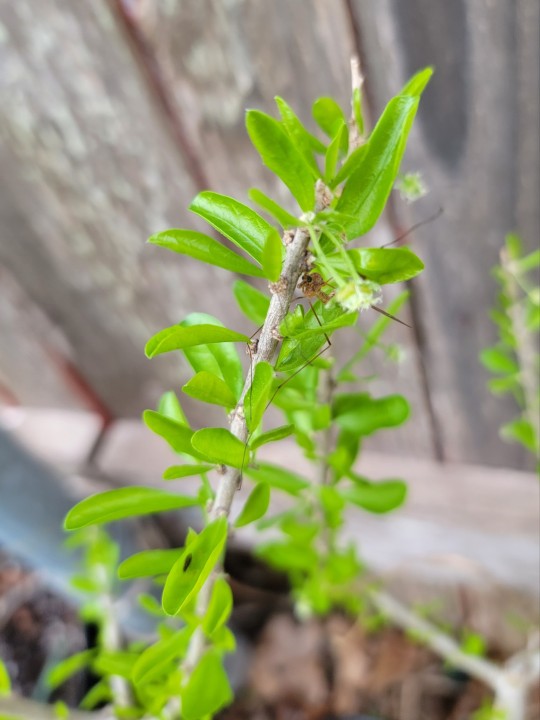

Adelia vaseyi, a new addition thanks to an ebay seller who's doing some great work bringing lesser known Texan and southwestern U.S. species into cultivation from seed. This plant belongs to the vast euphorbia family, and is known only from Tamaulipas and three counties at the southernmost tip of Texas. It's also the sole known U.S. native larval hostplant for the Mexican bluewing butterfly (Myscelia ethusa), though that butterfly does feed on other plants in more tropical parts of its range.
Unfortunately, this species is dioecious (male and female flowers occur on separate plants), so it won't be able to produce seeds unless I can obtain a male at some point. It's proving popular with the local insect population regardless.
20 notes
·
View notes
Text



Tilt
54 notes
·
View notes
Text

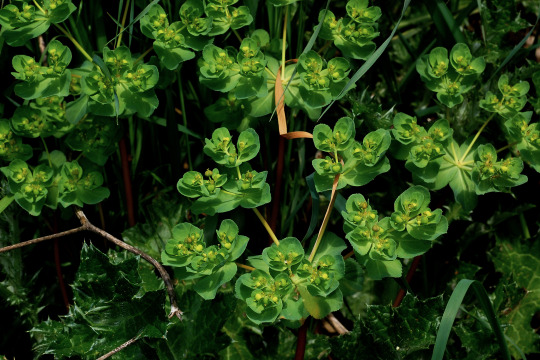
E – Euphorbia helioscopia L. – Euforbia calenzuola (Euphorbiaceae)
39 notes
·
View notes
Text
Euphorbia marginata

1 note
·
View note
Text
Sapatinho do Diabo - Pedilanthus tithymaloides
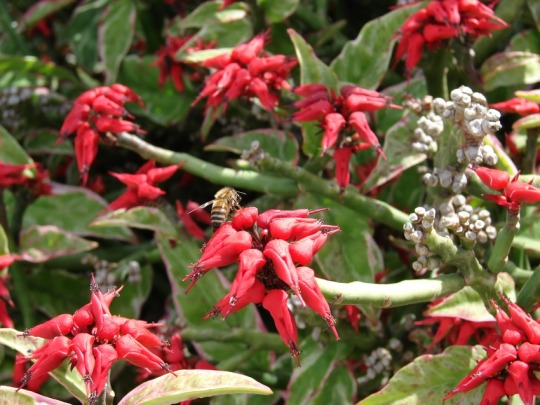
Nome Científico: Pedilanthus tithymaloides
Nomes Populares: Sapatinho-do-diabo, Dois-amores, Dois-irmãos, Pedilanto, Picão, Planta-zigue-zague, Sapatinho-de-judeu, Sapatinho-dos-jardins, Zigue-zague
Família: Euphorbiaceae
Categoria: Arbustos, Arbustos Tropicais, Flores Perenes
Clima: Equatorial, Semi-árido, Subtropical, Tropical
Origem: América Central, América do Sul
Altura: 0.9 a 2.4 metros
Luminosidade: Meia Sombra, Sol Pleno
Ciclo de Vida: Perene
Sobre a Sapatinho do Diabo
Esta planta de nome peculiar é uma espécie de arbusto e provém do continente Americano.
Podendo atingir o tamanho de uma pessoa comum, foi baptizada desta forma pois as flores parecem pequenos sapatos vermelhos.
As flores dos sapatinhos-do-diabo podem também ser em tons de rosa.
É muito comum vermos insectos por volta desta planta pois as flores são muito atractivas, especialmente para as abelhas, pelo que é preciso ter algum cuidado.
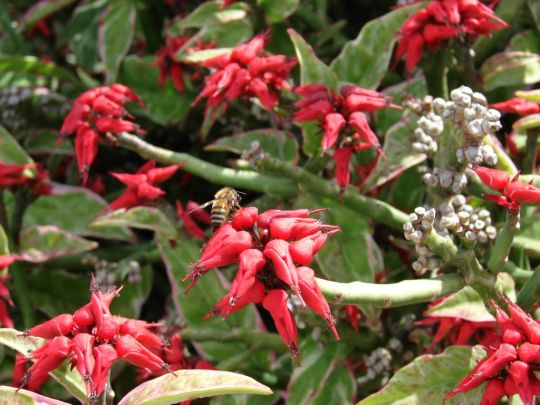
Também conhecida como Dois-amores ou Dois-irmãos
No paisagismo o sapatinho-do-diabo pode ser utilizado isolado ou em grupos, formando bordaduras ou maciços.
O seu porte pode ser facilmente controlado através de podas.
Da mesma forma, é possível estimular a ramificação e a renovação da planta com cortes periódicos.
Uma planta velha e que perdeu as folhas, pode ser rejuvenescida com uma poda drástica, que deixe poucos centímetros dos ramos acima do solo.
A escolha da Sapatinho do Diabo geralmente é feita devido à sua folhagem e ramos de aparência exótica, no entanto, eventualmente a planta nos presenteia com sua delicada floração.
O sapatinho-do-diabo é uma planta da família Euphorbiaceae, nativo das florestas tropicais secas.
Trata-se de um arbusto suculento, de seiva leitosa, que atinge cerca de 1,5m de altura, apresentando ramos verdes, em ziguezague, que acompanham a disposição alterna das folhas.
As folhas são ovais e de acordo com a variedade podem ser verdes ou mescladas de branco, creme e rosa.
As flores do sapatinho-do-diabo são pequenas e apresentam uma cor vermelha intensa, sendo perfeitas para decorar jardins externos.

A planta também pode ser conhecida popularmente como picão, planta-zigue-zague, sapatinho-de-judeu, dois-amores e pedilanto.
São flores muita atractivas para beija-flores e abelhas.
Sapatinho do Diabo deve ser cultivada sob sol pleno ou meia-sombra, em solo leve, bem drenável, enriquecido com matéria orgânica e irrigado com moderação.
Tolerante a solos pobres e curtos períodos de estiagem.
Sapatinho do Diabo aprecia o calor, não tolerando frio intenso, geadas ou encharcamento
Quando enfrenta seca muito prolongada perde as folhas. As fertilizações devem ser restritas à primavera e verão. Multiplica-se por facilmente por estacas.
Atenção
É preciso tomar cuidado ao manipular os sapatinhos-do-diabo, pois a flor contém um látex cáustico, que é tóxico e pode causar queimadura se entrar em contacto com mucosas e a pele.
Mais info: https://pt.wikipedia.org/wiki/Euphorbiaceae
Read the full article
0 notes